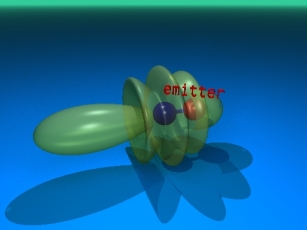We are interested in the theoretical description of the photoemission process
in gas-phase molecules, surfaces and solids, as a tool to characterize the
structure and electronic properties of matter. We mostly use multiple scattering
techniques to represent the wave function of the photoemitted electrons and
subsequently analyze the resulting angular distribution patterns of the photoelectrons.
Close collaboration with experimental groups is necessarily maintained:
In the particular case of photoelectron diffraction patterns from condensed-matter
systems (surfaces and nanosized clusters, for instance), the structural properties
can only be determined from an interactive combination of experimental data collection and
theoretical analysis.
In gas-phase, the measurement of the angular
distributions of photoelectrons emitted from free molecules fixed in space have just
recently become available. Previous to this
work, free-molecule studies were limited to orientationally-averaged measurements, thus
limiting the information derivable from the data. The dependence of
such fixed-in-space angular distributions
on photon energy provides an exciting new probe of electronic structure and dynamics.
Multiple scattering on non-spherical potentials has proven to be a powerful theoretical
approach to describe these processes.
Non-linear effects in photoemission processes from solid surfaces are currently
under study as well. A major challenge remaining in condensed matter
physics is the description of excited electronic states at the same level
of accuracy reached in the description of the ground state.
Multiphoton processes can be key to study electronic excited states.
We thus investigate contributions to the photoemission spectra of
orders higher than linear in the perturbation expansion
with respect to the photon intensity.
